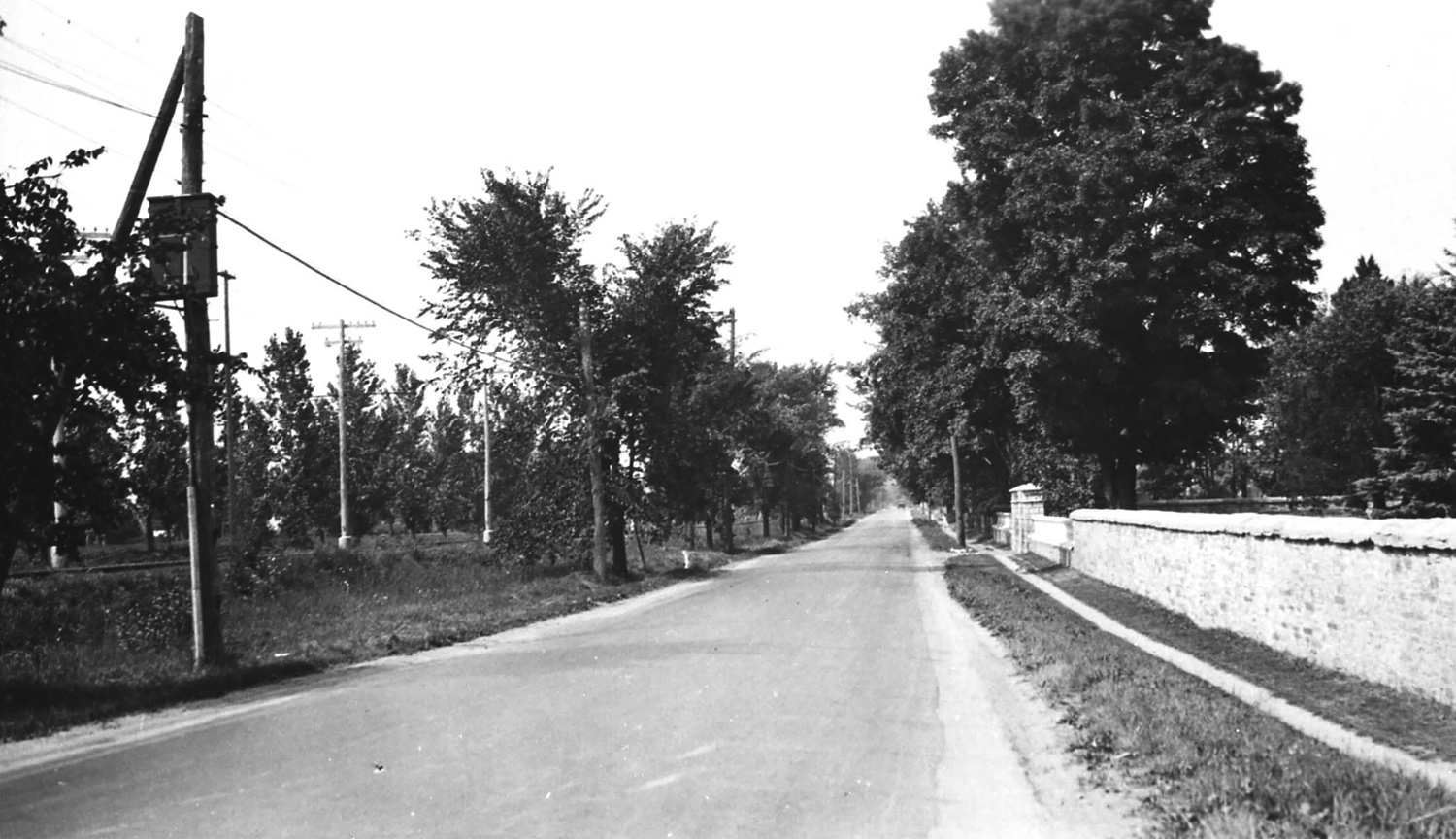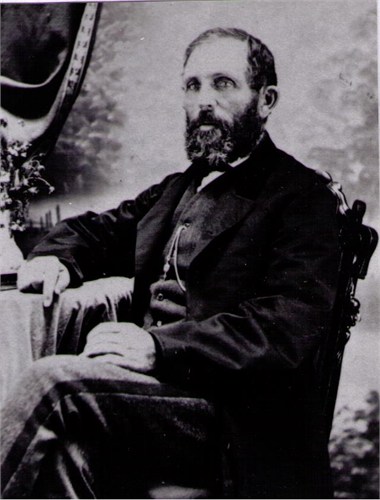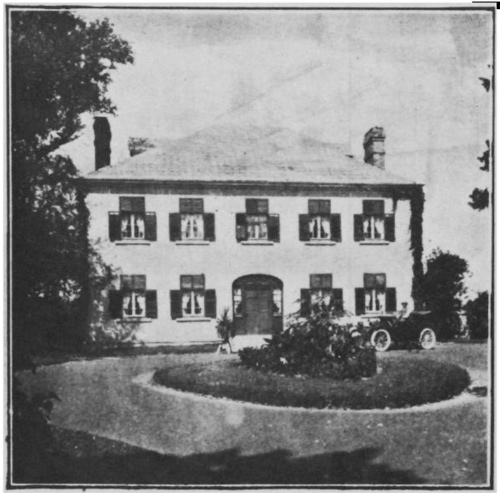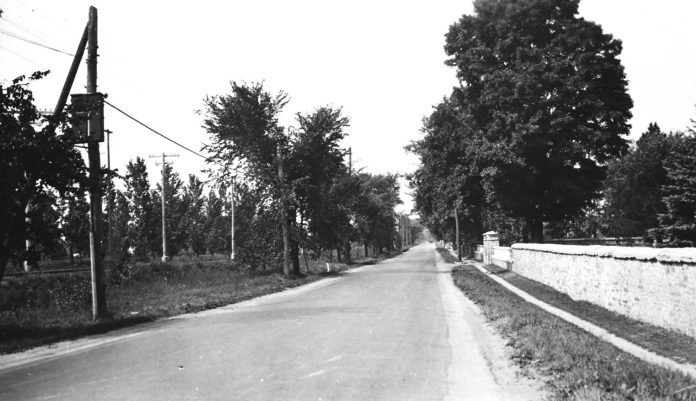By Dave Allston –
In my previous column, I wrote about the Thomsons, an important pioneer family in the history of Kitchissippi. I focused on the Thomson era from their arrival in 1818 to the unfortunate loss of their farm, including the Maplelawn stone house, sixty years later. That was the first of four distinct periods in the story of the property. In this issue of KT we will look at the next three.

In 1878, the mortgage holder was Colin Cameron, a wealthy farmer from Iroquois, Ontario. He had foreclosed on the Thomsons, who were indebted over $16,000. Records show that Colin lived at Maplelawn for a brief time before selling to his brother-in-law, Thomas Cole, in June 1879. Thomas had married Colin’s sister Catherine in 1850 and she died just a year into their marriage.

Thomas Cole worked his way up in the timber and lumber industry in Quebec. Not only did he establish a successful career in the trade, but he was also recognized for his innovations in logging. When he retired from the industry, Thomas sold his interests and acquired the farm on Richmond Road for himself and his wife Phoebe and their nine children. He renamed it the Highland Park Dairy Farm and carried on where the Thomsons had left off.
Their daughter, Lucy Helena, married Daniel Bailie Rochester in 1886. Daniel was highly regarded in mining and lumber circles and was the grandson of John Rochester, one of the first citizens of Bytown. John Rochester established Rochesterville, one of Ottawa’s first subdivisions, now known as Little Italy.
Lucy and Daniel had four children. One of them, Lloyd, would later come to play a prominent role in the story of Maplelawn.


In 1891, the Ottawa real estate firm Mutchmor-Gordon successfully flipped the former Skead’s Mill site – purchasing it from the E. B. Eddy Company and selling to the CPR. Using these profits, they immediately made an agreement to purchase Maplelawn from Cole. It was at this time that the Ottawa Electric Railway Company announced it was extending streetcar lines along Bank Street to Lansdowne Park, across from Mutchmor’s former home (Abbotsford). As a result, they cancelled their Maplelawn purchase and decided to invest in the Glebe instead.
In 1895, Thomas Cole sold the farm to his son John, who was as interested in real estate as he was in farming. In 1898, his first Westboro subdivision was registered with his brother William acting as agent for the sales.
Construction began in 1899 along the streetcar line through the centre of the farm (now Byron linear park). Lot sales exploded and the neighbourhood began to grow. John also donated a large plot of land for a school on Churchill Avenue (where Churchill Alternative Public School stands today).
Farming operations also continued to be prosperous. In 1899, the Highland Park Dairy Farm became the first in Canada to have electricity. Lights and machinery (such as the cream separator) in the house and barns ran fully on electricity.
Thomas Cole died in 1904. His son John retired from farming two years later and built himself a large stone house just east of Maplelawn (where Golden Manor now stands). He transferred Maplelawn and its adjoining gardens to his mother Phoebe.
John Cole slowly continued to subdivide the farm property moving west and south, calling his newest subdivisions “Highland Park.” He reaped the rewards of the boom of west end real estate and sold off the last of the Highland Park lots in 1933.
In October 1935, Bert Cole (brother of John and son of Phoebe, who passed away in 1921) sold Maplelawn to his nephew, the aforementioned Lloyd B. Rochester and his wife Frances, for $12,580. Lloyd was a veteran of WWI, having served with the Royal Flying Corps, and was also a successful engineer and mining prospector. The couple had three young children, all of whom were raised at Maplelawn.
Rochester hired top Ottawa architect, Gordon Hughes, to significantly renovate and expand Maplelawn, adding a summer kitchen and more bedrooms (now the entrance foyer and restaurant kitchen).
Post-WWII saw industry moving to Westboro in a big way. In 1950, Westboro became part of the City of Ottawa and the open land – which had been practically worthless through the 1930s and 40s –rocketed in value. Lloyd Rochester took advantage of this by selling his acreage. In 1952, rumours began to circulate that businesses were in negotiation to acquire portions of the Maplelawn estate to construct large warehouses.
Meanwhile, the Federal District Commission (precursor of the NCC) had begun to put their Ottawa-wide improvement plans into action, notably to establish a Parkway alongside the Ottawa River. They were not interested in seeing prime land adjacent to the Parkway become an ugly industrial worksite.
A unique business deal was struck in April 1952, whereby all three levels of government, plus private industry, came together in an agreement to purchase the old Cole farm. With the FDC’s careful approval, the property was sold in smaller parcels, each with a unique proposed use. The NCC acquired the Maplelawn house (for $36,000); the City of Ottawa acquired the gardens; Ontario Hydro acquired the land to the east to construct their Eastern provincial headquarters (which was demolished in the late 1990s); and long-time Ottawa drygoods firm, John M. Garland and Son, acquired the next portion to the east for a new modern warehouse (now Rogers TV).
Thankfully, the FDC was particularly interested in preserving the historic stone house. At the same time, they also acquired Pinhey’s Point and Brigham House/Columbia Farm in Hull. This marked a turning point in heritage recognition in Ottawa.
Lloyd Rochester was equally as interested in preserving the house and approved the deal knowing that Maplelawn would be saved. He also stipulated his family be allowed to continue to reside in the home as long as they wished.
Lloyd passed away in 1981 and Frances moved out in 1989, passing away three years later. The site was designated a national historic site in 1989 but the NCC let the house (and the gardens) sit vacant and virtually ignored for several years. A volunteer group assembled in 1993 called Friends of the Maplelawn Garden and through an agreement with the NCC, took over the maintenance of the gardens. The house was opened to the public briefly as the Maplelawn Cafe in 1996 and then after another period of vacancy, was leased to the Keg Manor in 1999.
A tremendous amount of appreciation is due Lloyd Rochester, and the NCC, for their foresight in preserving this historic property for future generations to enjoy.
Dave Allston is a local history buff and author of The Kitchissippi Museum. His family has lived in Kitchissippi for six generations. Do you have stories to share about the area? We’d love to hear them! Send your email to stories@kitchissippi.com. To read more of Dave’s columns, click here.
